History monastery Poblet
The origins of this Cistercian monastery go back to 1149 when Ramon Berenguer IV gave it to the monks of a French abbey.
It was a site that complied with the rules of the Cistercian order.
That is to say, to be located in an isolated place, to be surrounded by land suitable for agriculture and to have water supply.
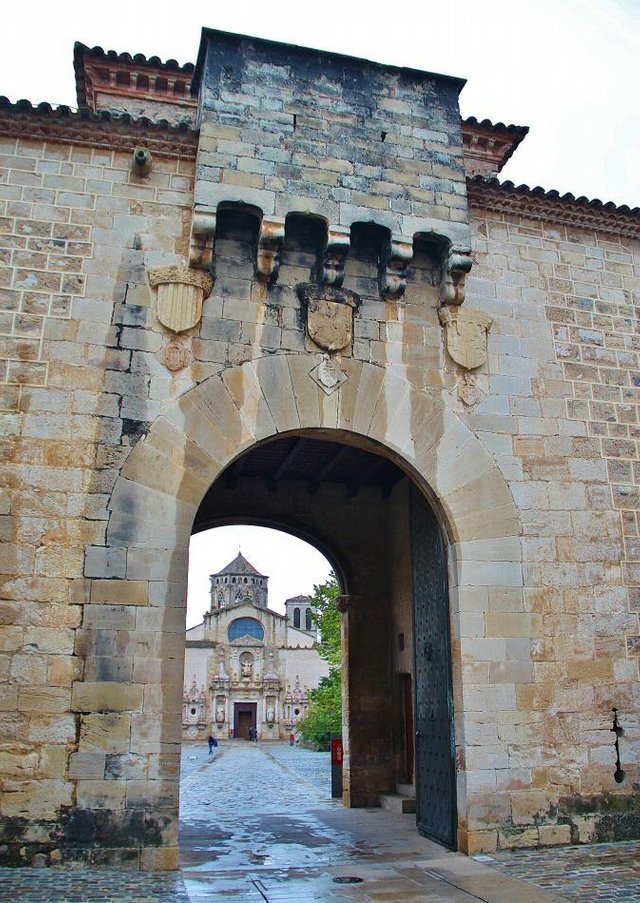
Golden Gate in access to Poblet monastery in Tarragona
Its greatest rise was during the 14th century, when it housed up to 140 monks, plus the lay brothers who worked for them.
It was at that time, specifically in 1340, when Peter the Ceremonious ordered the monastery to become a royal pantheon.
In this way, and until the fifteenth century, it became home to the sepulchres of the kings of Aragon and the Counts of Barcelona, specifically, up to eight kings and three queens.
In 1835 the monastery was abandoned after the disentailment of Mendizabal.
A century later, in 1930, the reconstruction of the monastery began and ten years later, the first monks of this new era arrived.
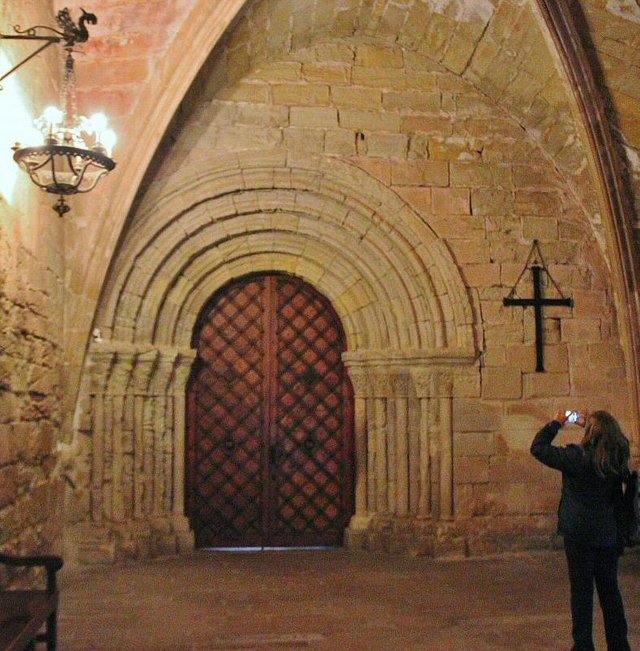
Romanesque door of the cloister of the monastery of Poblet
At present, 31 Cistercian monks reside in the monastery of Poblet, so I would like to inform you that the visit of their estancias is conditioned by the daily activities of these monks.
What to see in Poblet monastery
When you arrive at Poblet monastery, from the distance you can see that it is a great monastic enclosure.
Thus, at the beginning of your visit you will see that after passing through a first door, you will enter a first enclosure with a large esplanade.
In this enclosure stands out the Chapel of San Jorge, a small building from the mid-fifteenth century, whose gothic door will call your attention.
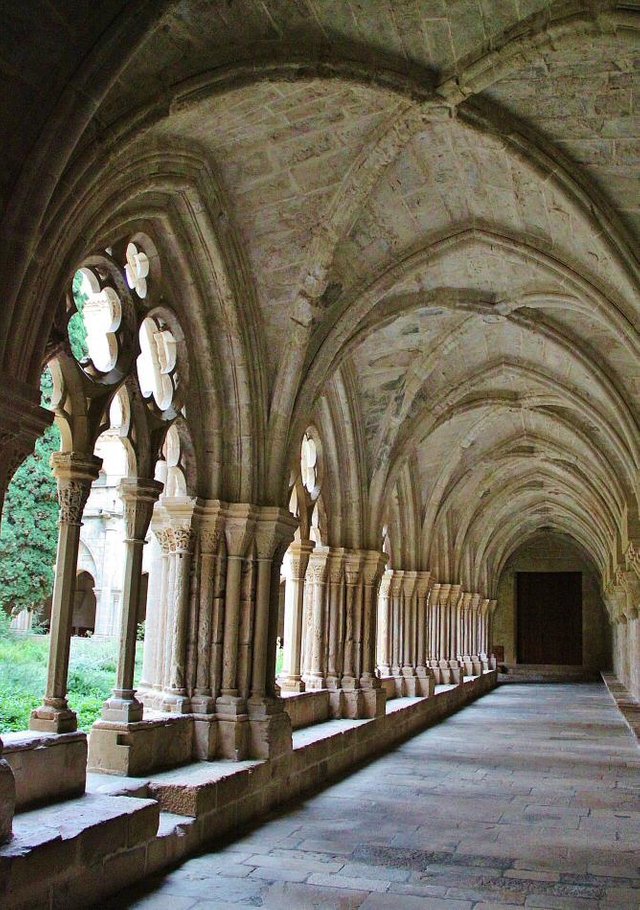
Gothic cloister of the Poblet monastery in Tarragona
This chapel is located next to a second portico of a new walled section, known as the Golden Gate, which gives you access to another large esplanade where you can already see the monastery church.
This church has walls on both sides as a continuation of its façade, which in reality are a wall that surrounds the different rooms of what is already the monastic enclosure.
This fortification was ordered to be built once the monastery became the royal pantheon of the Crown of Aragon.
You will see that the church façade shows a large baroque door, but the building actually dates back to the 13th century.
To enter the monastic enclosure you must pass through the so-called Royal Gate, from the 14th century.
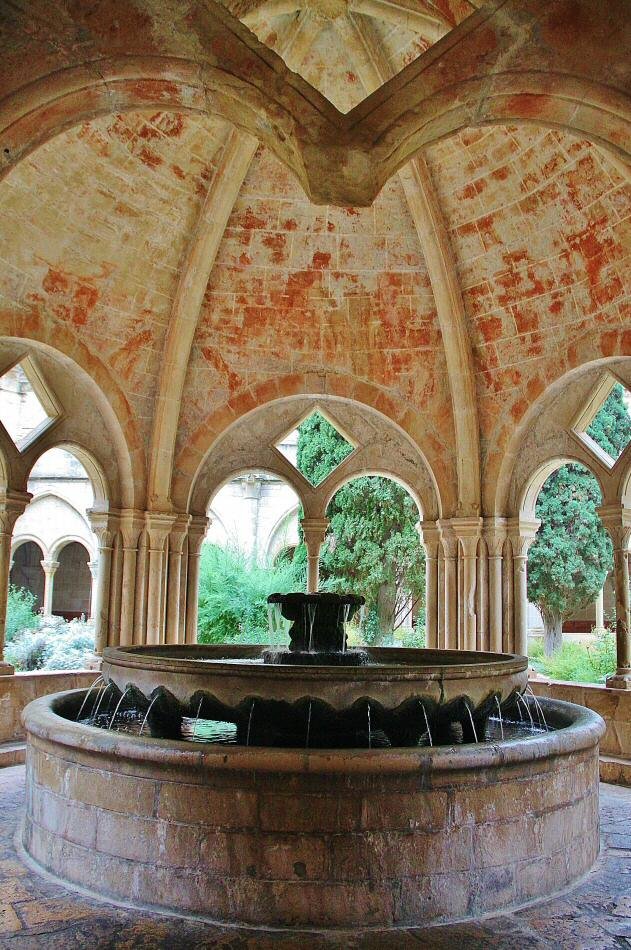
Lavatory of the cloister of the monastery of Poblet
This access opens between two of the twelve towers that are distributed along the wall that surrounds the aforementioned monastic enclosure.
Inside, the first thing you will see is the old 14th century refectory, which later became a winery to produce wine.
At present, Codorniu is the company that manages the production of ten hectares of vineyards owned by the monastery of Poblet.
The entrance door to the cloister of the monastery is Romanesque in style, and said cloister from between the 12th and 13th centuries is Gothic in style, with the capitals of the columns showing a simple vegetal decoration.
Around the cloister there are several rooms that continue to be used by the monks in their monastic life.
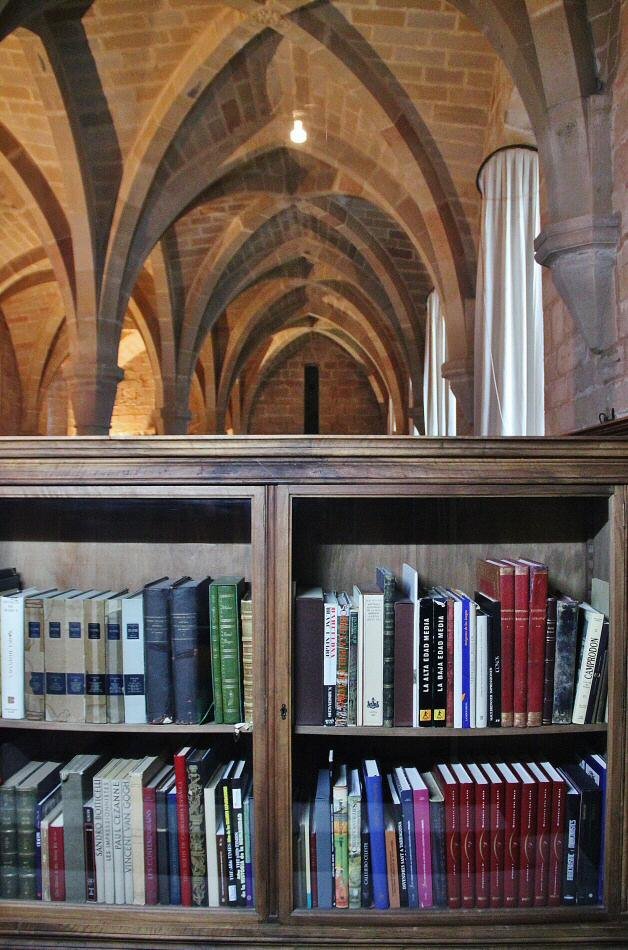
Monastery library of Poblet in Tarragona
This way, you will be able to see the refectory, or dining room, in which the dishes and cutlery are ready to be used in an upcoming meal.
The library conserves the original ceiling of the XIII century, although its collection, with more than 100,000 books, dates back to the last and most current stage of the monastery, from 1940.
You will also be able to see the chapter hall, which is equipped with a microphone for the daily reading that the monks make of a chapter of the rule of St. Benedict, which regulates their monastic life.
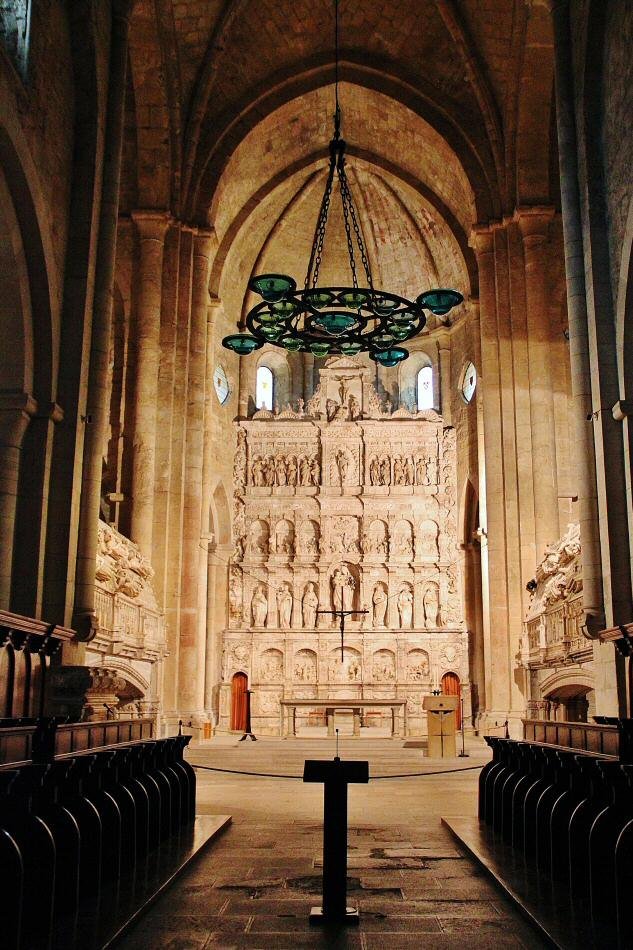
Main altar of the church of Poblet monastery